Theatre where Hamlet first performed given listed status
- Published

Then: An artist's impression of what the Theatre in Hackney would have looked like in the Elizabethan era
The archaeological remains of two Elizabethan playhouses, one of which saw the first performance of Shakespeare's Hamlet, have been given listed status.
The Theatre and the Hope were the first and last playhouses built in Elizabethan London.
They join the Rose and the Globe as protected monuments to 16th and 17th Century theatre.
The sites of three bear-baiting pits in the Bankside area have been listed.
For more stories on archaeology follow our Pinterest board, external
The Theatre was built in 1576-77 by James Burbage on the junction of Curtain Road and New Inn Yard in Hackney and a number of companies, including the Lord Chamberlain's Company which included William Shakespeare, were associated with it.
It is believed to have been the first playhouse in which Hamlet was performed, in 1596 with Richard Burbage as the lead.
Christopher Marlow's Faustus is thought to have first been put on at the theatre in 1592.
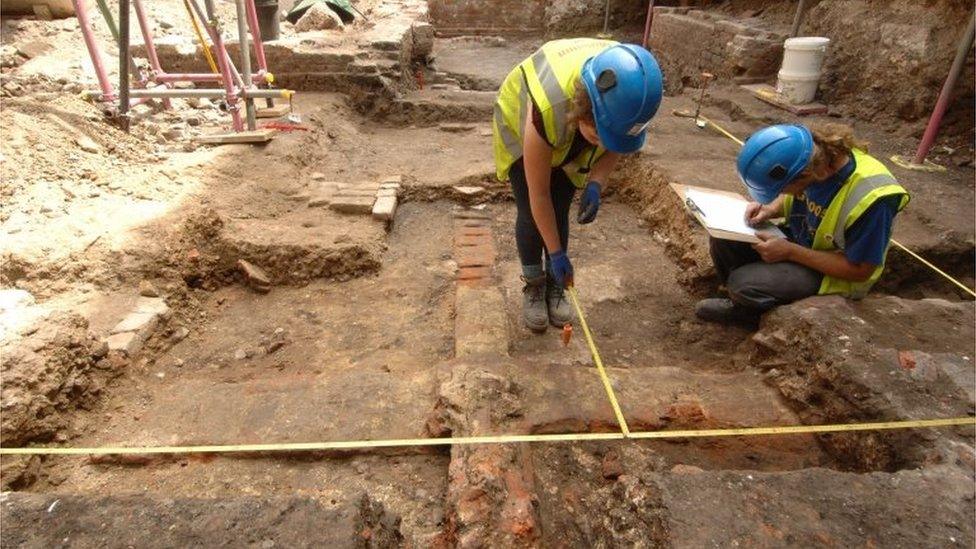
Now: Archaeologists measuring the foundations of the remains of the Theatre, where Shakespeare's Hamlet is believed to have first been performed in 1596
After a financial dispute, Burbage's sons dismantled the theatre in late December 1598 and moved reusable parts south of the Thames to Bankside for use in construction of their new venture, the Globe.
The remains of the Theatre now lie beneath a modern mixed-use building in Hackney.
The Hope was the last of the playhouses of the era, opening in approximately 1614 after Philip Henslowe and two partners entered a contract to replace "the Bear Gardens" with a new building that would be a joint theatre and bear-baiting arena.
The first play performed there was Ben Jonson's Bartholomew Fair but animal baiting and other entertainment gradually eclipsed the plays and the acting company left the Hope in 1617.

Then: An artist's impression of the Hope theatre as it might have looked in the age of Shakespeare
It was ordered to close down by Parliament in 1643 but continued to operate until it was dismantled in 1656.
The remains of the Hope are located beneath a car park on the southern side of Riverside House on Southwark Bridge Road.
Duncan Wilson, chief executive of government heritage agency Historic England, said: "The archaeological remains of the first and last Elizabethan playhouses to be built in London give us fleeting glimpses of a fascinating period in the history of theatre.
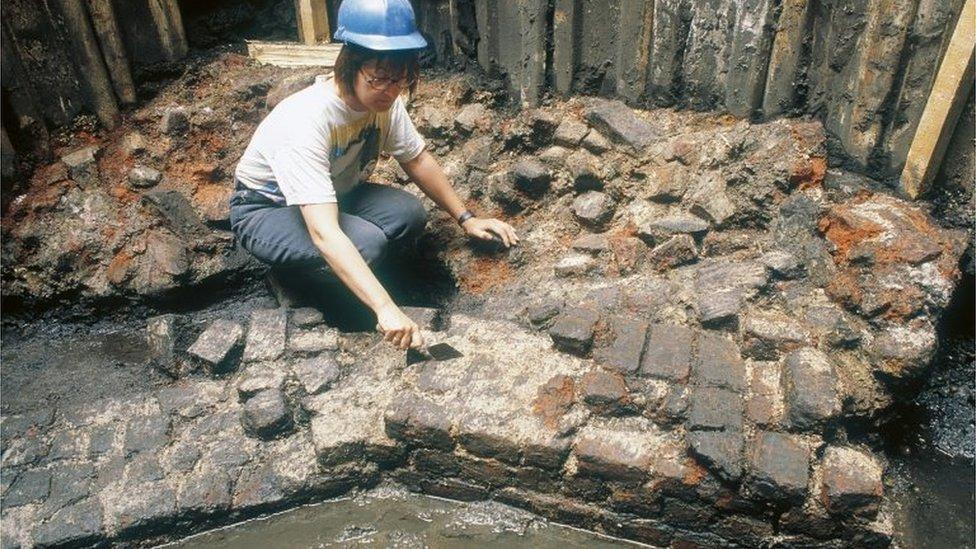
Now: An archaeologist works on the foundations of the remains of the Hope theatre
"They are where some of the world's greatest stories were first told and it is wonderful that they remain today, bearing witness to our fascinating past.
"Their cultural importance, particularly their connections with Shakespeare and Marlowe, means they deserve protection as part of England's precious historic fabric."
- Published23 September 2016
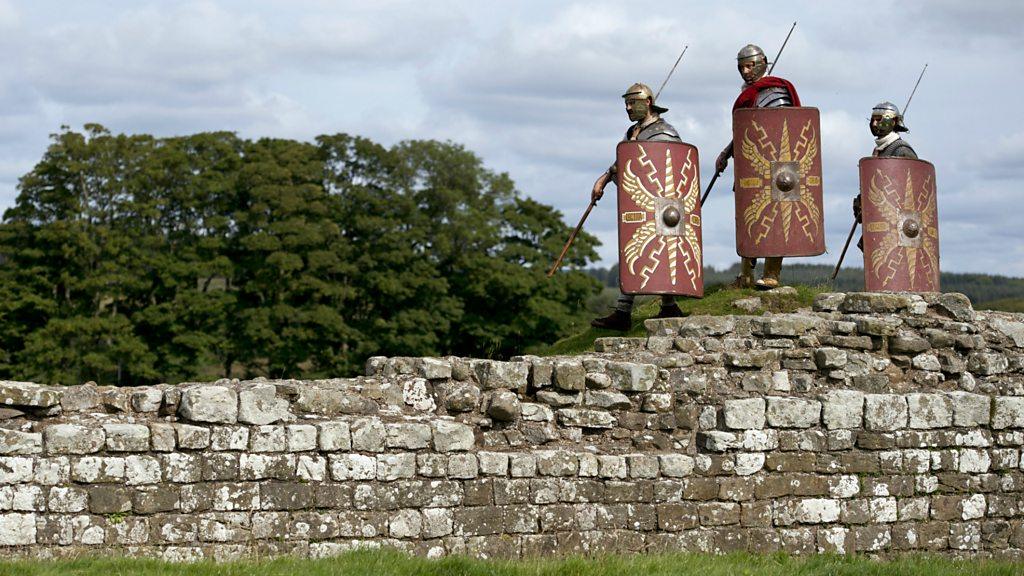
- Published8 September 2016

- Published5 September 2016
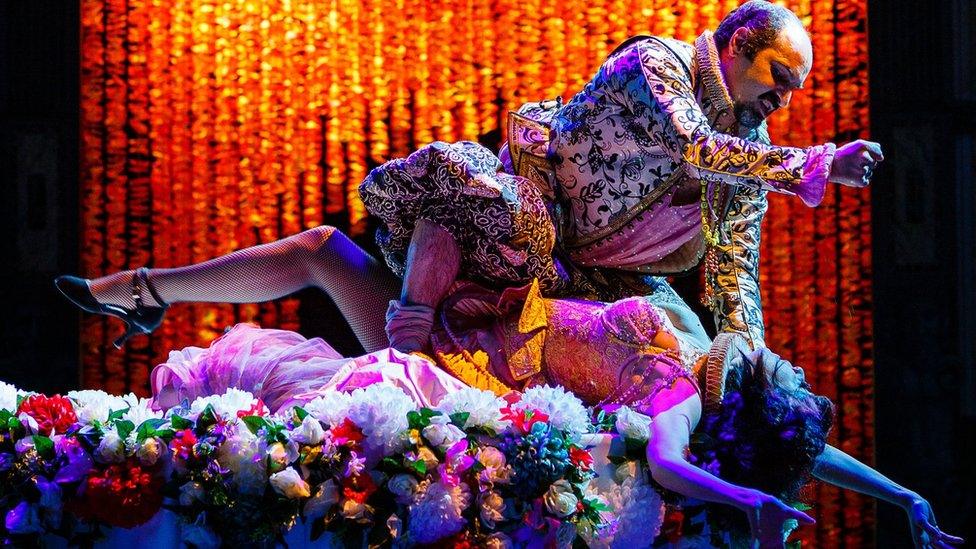
- Published4 September 2016
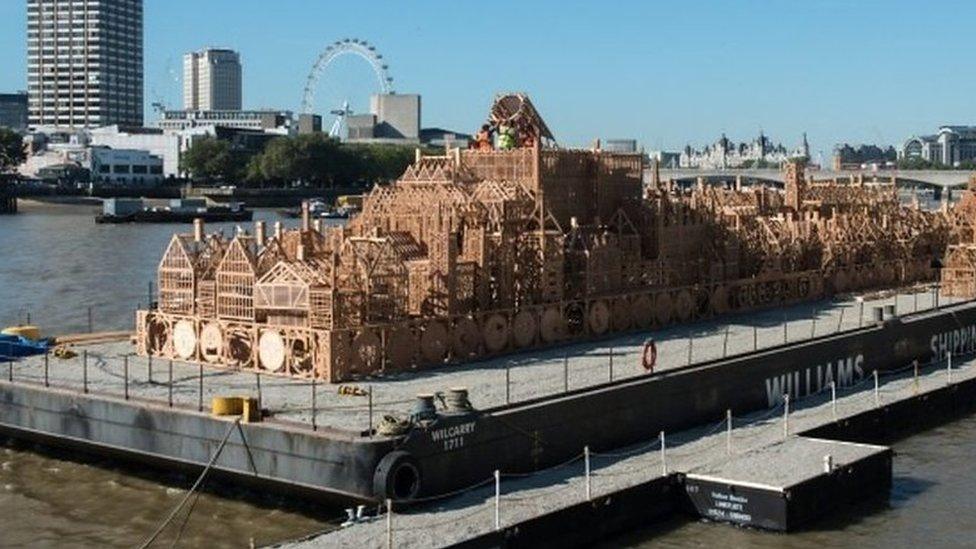
- Published23 April 2016
- Published29 February 2016
